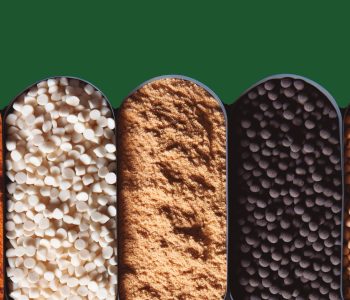Several factors are considered when selecting alternative feed ingredients, including feed price, regional and year-round availability, nutritional quality, antinutritional factors, inclusion levels, palatability and digestibility, economic viability, research, sustainability, and limitations of feed mills.
- Price
These traditional feeds are known for their high nutritional quality and high inclusion rates in diets, while alternative ingredients generally have some limitations.
While most by-products are generally more economical than traditional feed ingredients, lower nutritional quality in some cases can limit their use.
The product’s price is not only about production costs but also the nutritional quality and performance benefits it offers animals.
- Economic viability
[register]Economic viability examines a feed’s characteristics alongside its use and market value. A lower-cost feed isn’t beneficial if its inclusion does not maintain production levels.
- Regional and Year-Round Availability
Alternative feeds tend to be available in specific regions, and the abundance of grains and industrial by-products can be highly valuable economically, strengthening the supply chain.
However, the seasonality of some feeds necessitates greater planning for diet diversification.
- Nutritional value
To use an ingredient in formulations, it’s essential to know its physical and chemical properties to optimize its utilization efficiency in animals.
The nutritional composition will define the ingredient’s classification for animal feed use. Ingredients with a high fiber content (>18%) are considered roughages, while those with less than 18% crude fiber (CF) are considered concentrates. Concentrates can be protein-rich (over 20% crude protein, CP) or energy-dense (under 20% CP).
Consideration must also be given to limitations in using some ingredients, such as toxicity issues, handling, and preservation, which can affect nutritional quality.
- Antinutritional Factors
These are compounds or compound classes present in plant-based feeds that reduce nutritional value, interfere with digestibility, absorption, or nutrient utilization, and impact the efficiency of animals’ biological processes.
- Inclusion Levels
These depend on the feed’s chemical nature, the animal species it’s intended for, the growth stage, and production costs.
- Digestibility
In some species, a feed’s nutritional composition may affect passage rate.
In non-ruminants, increased fiber leads to more peristaltic movements, accelerating passage rate and reducing contact time with enzymes, thus decreasing absorption.
Knowing the digestibility coefficient is crucial for decision-making, as it aids in selecting appropriate feeds based on the species and feed type to be produced.
Choosing nutrient-rich feeds without knowing their digestibility rate risks compromising feed efficiency. Low digestibility in animal nutrition can cause weight loss and nutritional deficiencies, even if nutrients are present.
- Research
Research on alternative ingredients has allowed their use while maintaining performance (with cost reduction). Thus, choosing an alternative feed should always be based on consistent research results.
Research is essential for this sector’s development, assessing the economic viability of production as insect farming and meal processing evolve.
- Sustainability
Optimizing feed utilization can make the activity more sustainable, improving feed efficiency, reducing resource demands for animal protein production, and limiting nutrient losses through waste, which can harm the environment.
In Brazil, research on insect-based feeds is growing due to sustainability benefits, as they require little energy and water, do not compete with other crops, and can be converted into high-nutritional biomass.
- Limitations of Feed Mills
Challenges extend beyond balancing an efficient diet; alternative feed use is also limited by feed mills’ capacities to handle and store new ingredients. This may require dedicated silos, storage spaces (e.g., for bulk bags), and even dispensers (for different fat sources).
Thus, choosing a new raw material also depends on the feed mill’s ability to handle and store it.
FINAL CONSIDERATIONS
The search for alternative feeds aims to reduce feeding costs.
New products are constantly emerging, and scientific research is essential to confirm their nutritional benefits for animals, market availability, and economic viability in formulation and feed mills.
References available upon request. [/register]
